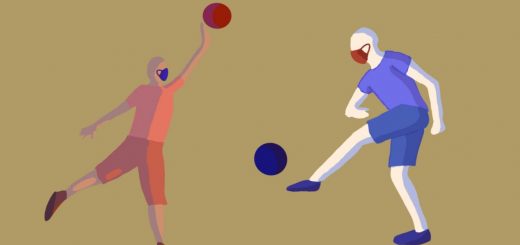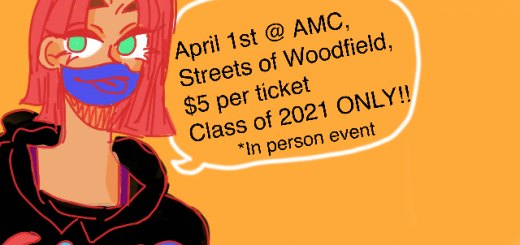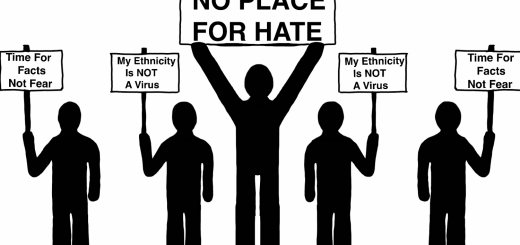School nurse in the age of Coronavirus: interview with Nurse Smeltzer
Before the pandemic, Dawna Smeltzer’s responsibilities were what someone might typically expect of a school nurse. She administered first aid, kept track of health records, administered medication to students, completed vision and hearing exams, and more at Conant High School.
 Photo from D211 website
Photo from D211 website Nurse Dawna Smeltzer is the appointed District 211 Support Nurse for COVID-19, making her in charge of overseeing COVID-19 type issues and tracking symptoms and cases in the district.
Now, as the District 211 COVID-19 Support Nurse, her days are mostly spent helping District 211 develop new protocols and deciding courses of action. She also works part-time at Conant keeping track of coronavirus cases.
Birigit Cain, head of Student Services at Conant, explained the specific logistics of Nurse Smeltzer’s new role as District 211 Support Nurse for COVID-19: “[She] spends half of her day with us at Conant and the second half at the district office helping to oversee COVID-19 type issues such as [safety] protocols, corresponding with IDPH and CCDPH as well as tracking symptoms and cases.”
Smeltzer said, “In the 13 years I’ve worked with the District, we’ve never had a role like this. It’s very unique.”
Conant and District 211 as a whole has developed many new procedures to protect staff and students from COVID-19. Numerous parts of a typical school day have been changed to account for the CDC’s social distancing guidelines.
There are now longer passing periods, less students attending in-person classes, and mask mandates. But many students might not have thought about the extensive preparation behind these protocols.
As the District 211 Support Nurse, Smeltzer works primarily with District 211 employees to create these guidelines and procedures. She also has direct contact with the Cook County Department of Health, where she reaches out if she has any questions or needs any information.
At Conant, Smeltzer works on tracking possible COVID-19 cases. District 211 has developed a system in which every day before arriving at school, students must complete a “wellness check” where they answer questions about their health, such as if they have a cough, chills, or a fever.
If they answer yes to any of these questions, they fail the check and cannot come on campus. If they say no to all of these questions, they pass and are given a green checkmark, which they must present to staff upon arriving at school to be allowed access into the building.
After a student fails a wellness check, Nurse Smeltzer follows up with parents to see if it resulted in a positive COVID-19 test. If so, she follows the Illinois Department of Health guidelines, which means keeping students off-campus for 10 days or until they’ve tested negative.
Nurse Smeltzer also has to report cases to the Cook County Department of Health and conduct contact tracing, in which she must find and notify all individuals any sick student or staff member may have come in contact with.
“We are extremely fortunate to have Nurse Smeltzer leading our school’s medical response to the pandemic. She is the primary point of contact with the Cook County Department of Public Health for Conant High School and in her role as the lead nurse for the district,” Conant principal Julie Nowak said.
“These are challenging and uncertain times. Nurse Smeltzer has done phenomenal work responding to our students and their families, along with our staff’s medical questions. Many parents and staff members have shared their gratitude for her role as frontline support,” Nowak said.
After hearing what her colleagues had to say about her job, the Crier sat down with Nurse Smeltzer herself to see what it’s like being a school nurse during a pandemic.
Crier: What would you say are the main challenges you’ve faced regarding protecting students and staff?
Smeltzer: I think the biggest obstacle is making sure that people are being honest with their wellness screeners. We hope people are being honest and are staying home if they’re not feeling well. We understand that people want to be on campus. I want to be on campus. We just need to make sure that people are being honest because once it comes on campus, it creates a lot more issues.
Crier: What are the most challenging parts when it comes to contact tracing?
Smeltzer: Trying to get students or their parents to tell us who they’ve been with. Some parents are very open and honest and some parents want to handle it on their own. We can’t force parents to give us information, so we’re not sure if everyone’s being notified.
Crier: When did you realize COVID-19 was going to be a serious threat and that it was time to start preparing schools to start taking action?
Smeltzer: Last March, we had a lot of concerns. In January, we had seen higher influenza rates and we didn’t seem to understand why because we hadn’t really seen that in the past. When there was a more heightened awareness of COVID in February and March, that’s when we realized that it was going to be an issue. We spent all of the spring and summer trying to prepare for this school year.
Crier: How has going remote changed your job? Has it made it more difficult? Has it made it easier?
Smeltzer: It’s made it more difficult. I like being a more hands-on type of person, so I like being in the building. I think it’s a new learning curve for all of us because we’re used to having students in front of us and working with students that way. In-person, we’re able to talk to them and read their body language and to try and figure out what’s going on and we don’t have that right now.
Crier: What are some things people probably don’t realize is part of your job of keeping staff and students healthy?
Smeltzer: Maybe just the amount of time spent trying to keep up with the changing of the guidelines. Like right now [December 4], the CDC has made recommendations to change the quarantine and isolation guidelines for close contacts. A lot of people believe that because the media says that, that’s what the CDC says and it’s in place. It’s not in place yet. It’s challenging because people hear things on the news and what you hear on the news isn’t always the complete and factual story. I’ve spent a lot of time in the past week with parents and staff disagreeing with me based on what they heard on the news, while these guidelines are still in place and haven’t changed yet.
Crier: What do you see the future looking like at Conant with the coronavirus?
Smeltzer: I’m hoping that we’ll start back in the hybrid model after the holidays in January. A lot of it will be based on the Health Department recommendations and where the COVID numbers are in January. Immunizations are also going to be key. For more students to be allowed in the building, people are going to have to get the vaccine, so the guidelines can change. My hope is if people can get the vaccine, we can start next school year in a somewhat more normal setting. Of course, getting the vaccine is a personal decision, but I don’t think the guidelines will change if the general public chooses not to get the vaccine. I wouldn’t encourage or discourage anyone from getting the vaccine. It’s something they should speak to their healthcare providers and their parents about and decide for themselves.
Crier: Is there anything else you would like for students at Conant to know about your job or coronavirus at Conant?
Smeltzer: I would just note that the wellness screener, as much as it may be frustrating for students to do, it definitely has helped us keep some students and employees off-campus when they really needed to. I would also like to say the district’s doing everything they can to make the students and staff safe on campus. I believe that we may be doing more than some other districts in Illinois, and I do believe we are doing the best we can to keep people safe. I have no hesitation to go to school, so I would hope kids would come to school. I know everyone misses the way it was.




Recent Comments